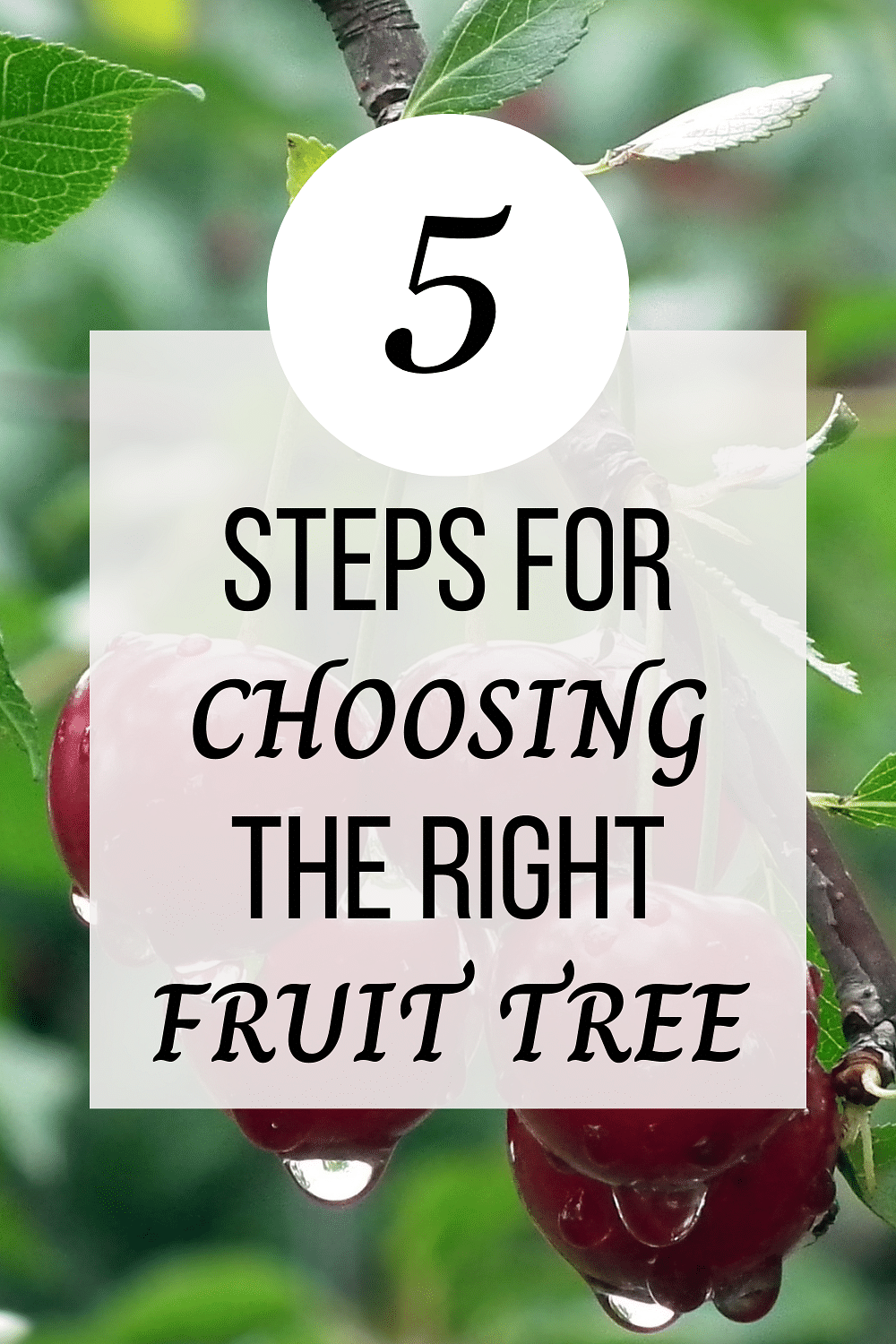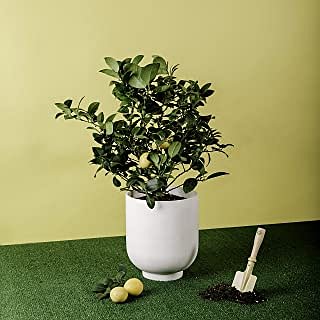
Deciding on a fruit tree for your home garden can be a little intimidating. It’s a permanent addition! Here are five things to consider and research before you choose a tree:
- Your climate and Hardiness zone where you garden
- How much space you have in your garden area
- How much time you have for maintenance of a fruit tree
- How long you plan to live where you garden
- How you plan to use the fruit
 Climate and Hardiness Zone
Climate and Hardiness Zone
Let’s be clear, the climate where we garden takes into consideration more things than just our average winter low temperatures, which is what our Hardiness zone is based on. The climate also encompasses things like amount of annual rainfall, humidity levels and winds. So, even though your hardiness zone is 6a, that doesn’t mean your climate is that same as someone gardening in southwestern Colorado or northeastern Ohio who are also in zone 6a. That hardiness zone tells us nothing about how well a particular type of plant will grow in our garden, only that we need one that will survive those low temperatures over the winter.
So, understand the climate conditions in your area first. What amount of rainfall do you average each year? Do you have frequent winds that roar through your area that may damage fruit trees that tend to grow in a wispier manner than others? What are your average hottest days in the summer?
Then, understand your own microclimate in your garden or wherever you plan to keep your fruit tree. If you’re going to keep it in a pot on the patio, does that patio have a brick wall that’s going to radiate heat? That may make it too hot for some fruit trees in the middle of the summer. Are you gardening in a valley where the cold air tends to settle, keeping your temperatures cooler than the surrounding areas? Do you garden near a coastline that gets buffered from the much colder winter temperatures the rest of your area experiences? Knowing these things will get you one step closer to finding what you can grow in the way of fruit trees.
How much space do you have in your garden area?
It’s important to research the size of the mature tree when you’re looking at different fruit trees and their different varieties. They vary widely within each species and there are many new hybrids on the market that are specifically designed for small spaces. There are miniature, dwarf, semi-dwarf, and standard versions of just about every fruit tree out there now. Research the maximum height which will also tell you the approximate canopy cover of the tree, the distance the trees branches will spread out into your garden or yard, and the spread of the roots. You don’t want to plant trees that will eventually end up rooting up your sewer lines or backyard pavers.
How much time do you have for maintenance of a fruit tree?
It is possible to have a fruit tree in your garden that will produce a crop of some kind with absolutely no maintenance from you. Your chances of a good harvest improve with more attention, though, and most of us aren’t planting a fruit tree just for looks so maintenance is a consideration.
you. Your chances of a good harvest improve with more attention, though, and most of us aren’t planting a fruit tree just for looks so maintenance is a consideration.
Basic pruning of a fruit tree will likely only take about a half an hour at most in the early spring and this will partly depend on the age and size of the tree. The other things you may need to do will be for preventing disease and pests. This may involve spraying dormant oil and picking up old fruit off the ground throughout the season. You may need to be watering, mulching, feeding the tree with fertilizer or other amendments. Much of the heaviest time requirements for a fruit tree occur in the first year when you’re first planting it. There may be staking involved and you might have to protect the trunk.
If you’re growing in containers, these trees need a little bit more attention to the pruning portion of this in order to get the best yield and to be sure they don’t outgrow their space. Tree maintenance is just like anything else in the garden, though. The more attention you give it, the likelier it is you’ll get a good yield, but you’re probably going to get something out of it even if you ignore it. So don’t let this point be the one that stops you from planting fruit trees in your garden.
How long do you plan to live where you’re gardening?
Most fruit trees don’t start producing right away. Depending on the size of the variety you buy, some take much longer than others. This usually means they live longer, but what we’re concerned about here is whether or not you’ll get a chance to reap the rewards of planting your tree before you move on to a new garden location.
Fruit trees purchased at a nursery or garden center or shipped to you from an online source are usually 1 to 2 years old. The length of time it takes to start fruiting after you plant it will depend on the type of fruit and whether it’s a dwarf or semi-dwarf variety versus a standard one. Dwarf and semi-dwarf apple and pear varieties begin to bear fruit at a much earlier age. Other fruits don’t seem to be affected in the same way, though, so keep that in mind.
It may take two to five years for an apple or pear to start producing fruit after being planted. For cherries and plums, it’s more like three to six years. Citrus trees and figs are only about one to two years after planting, peach trees two to four years, and pawpaw trees can take up to seven years. So, if you’re in a situation where you know you plan to move within the next 5 years, you may decide against the pawpaw and choose a peach tree instead.
And, if you’re in a rental or a smaller space or just don’t know what your plans are, those container trees are always an option.
How do you plan to use the fruit?
This might sound a little strange, but it’s important. If you’re someone who enjoys fresh fruit, but doesn’t intend to do a bunch of freezing and canning, you may not want to choose a tree that bears a whole lot of fruit all at once. A mature, commercial standard-sized cherry tree can produce as much as 800 pounds of cherries over just a three-week period. That’s like 4000 cherries. That’s a LOT of cherries if you don’t plan to make jam or freeze a bunch and still give some away to friends and family. Even a dwarf variety that stays much smaller and produces a more manageable 20 lbs of cherries in the same time period might not be suited for you if you have no intention of preserving any of that fruit.
If we’re looking at apples, a mature standard apple tree may produce as much as 500 lbs of apples, while a semi-dwarf variety will yield more like 250 lbs and a true dwarf maybe 40 to 100 lbs at maturity. So, unless you plan on canning up apple pie filling, applesauce, and apple butter for the entire neighborhood, a dwarf or semi-dwarf may be your best bet. And if the production level of even the dwarf varieties seems like more fruit than you’d know what to do with, you’ve still got the options of the container varieties.
Some careful consideration before planting fruit trees can mean the difference between success and failure and save years of frustration.
Your friend in the garden,
Karin

